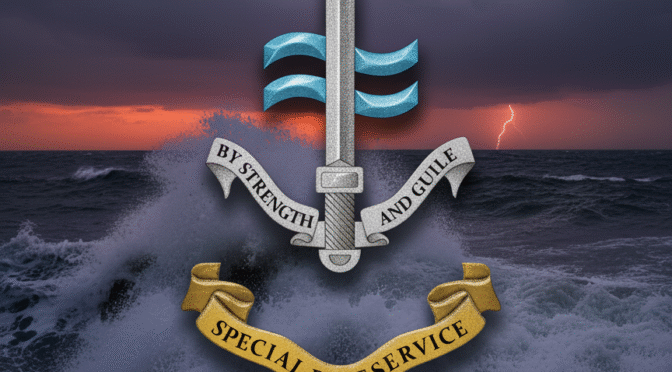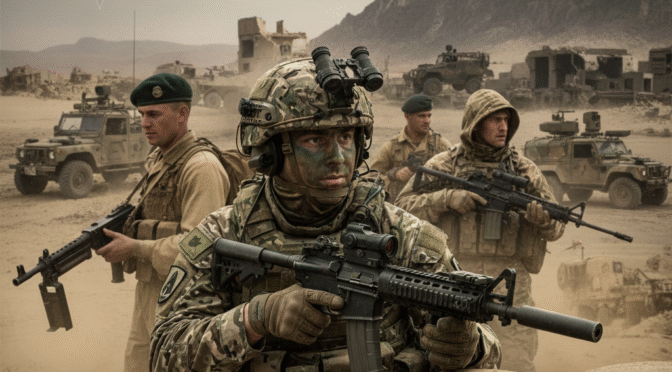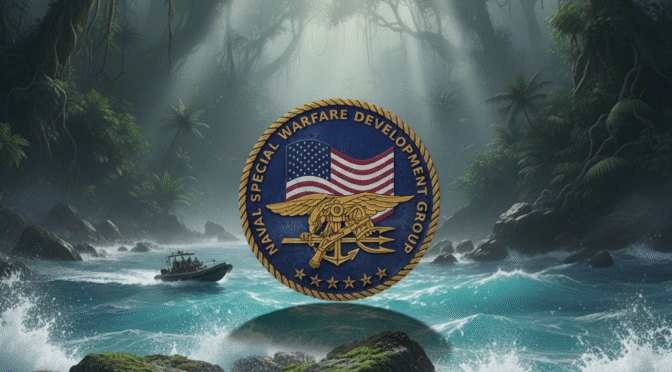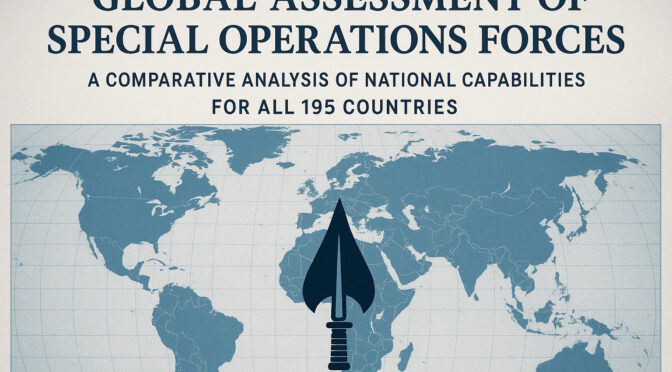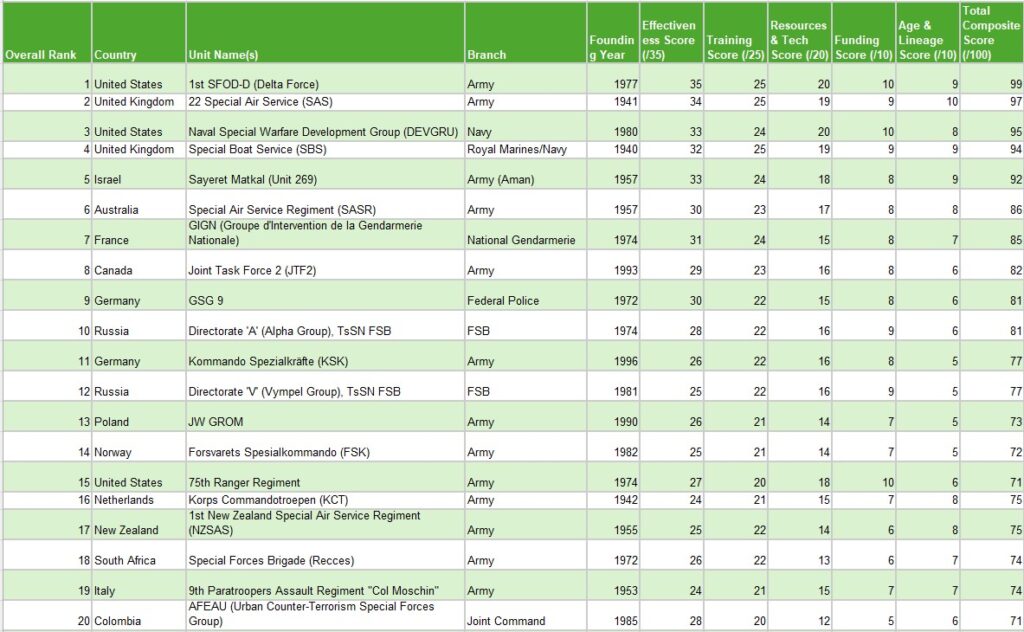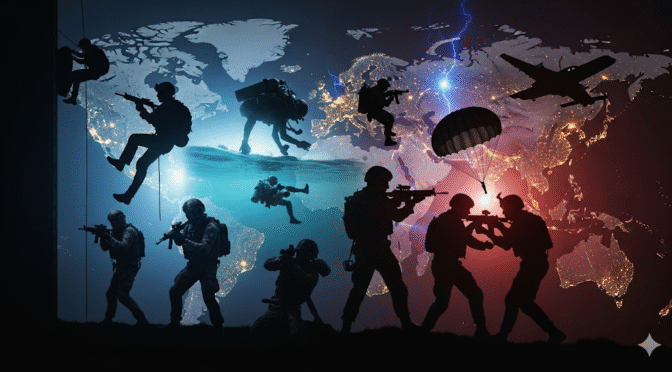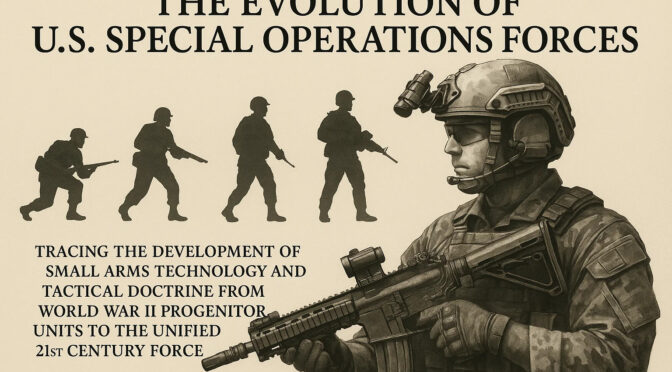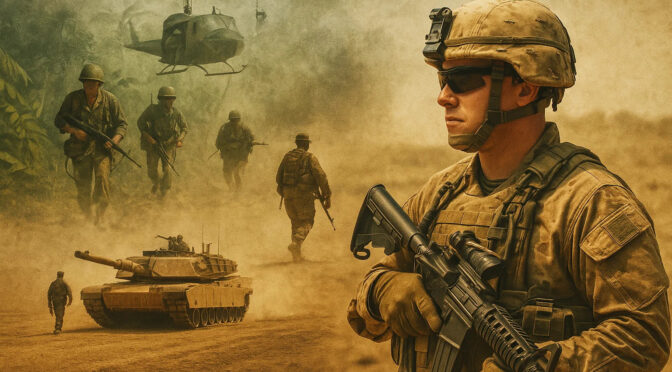In the aftermath of the Dunkirk evacuation in 1940, the strategic landscape for the United Kingdom was stark. With conventional forces ejected from continental Europe, the imperative arose for a new form of warfare based on raiding, reconnaissance, and sabotage.1 This necessity gave birth to the British Commandos, units designed for highly mobile, aggressive “butcher and bolt” operations. It was within this crucible of unconventional military thinking that the specialized units destined to become the Special Boat Service (SBS) were forged.1
1.2 The Folboat Pioneers
The conceptual origins of the SBS can be traced to one individual: Major Roger ‘Jumbo’ Courtney. A charismatic and determined Commando officer, Courtney championed the novel idea of using folding kayaks, known as “folboats,” for clandestine amphibious operations.2 His proposals were initially met with skepticism by the naval establishment. To prove the concept’s viability, Courtney undertook a daring clandestine infiltration of HMS
Glengyle, a Landing Ship, Infantry anchored in the River Clyde. He paddled to the ship, boarded undetected, inscribed his initials on the captain’s cabin door, and absconded with a deck gun cover, which he later presented to a meeting of astonished senior naval officers.3 This act of initiative, a perfect embodiment of the unit’s future motto “By Strength and Guile,” led to his promotion and the authority to form a twelve-man unit.3
This small cadre was officially formed in July 1940 as the Folboat Troop of No. 8 Commando.4 In February 1941, the unit deployed to the Middle East as part of the larger “Layforce” commando group, where it was formally designated the No. 1 Special Boat Section (SBS).2 From bases in Malta and Alexandria, attached to the 1st Submarine Flotilla, the SBS began to refine its unique tactics. Early operations focused on stealthy insertion via submarine and two-man canoe teams to conduct beach reconnaissance of targets like Rhodes, sabotage raids along the Libyan and Cyrenaican coasts, and the destruction of infrastructure such as railway lines.2 Their primary weapons were skill, stealth, and explosives, particularly limpet mines.
1.3 Expansion and Integration with the SAS
The demonstrable success of these early operations led to a decision to expand the capability. In December 1941, Major Courtney returned to the UK to establish a second unit, No. 2 SBS, which was formed from the battle-hardened 101 Troop of No. 6 Commando.4 This move indicated a shift towards a more formalized selection process, drawing upon soldiers with proven operational experience.
Concurrently, in the Middle East, a pivotal organizational change occurred. In September 1942, No. 1 SBS was formally absorbed into Lieutenant Colonel David Stirling’s 1st Special Air Service (SAS) Regiment.2 This event was not a dissolution but an integration that marked the beginning of the complex, symbiotic relationship that defines UK Special Forces (UKSF). The absorption into the SAS was a logical step to consolidate Britain’s disparate special units in the theatre, but it did not erase the SBS’s unique identity. When the SAS was reorganized in April 1943 into the Special Raiding Squadron (SRS) under Paddy Mayne, the SBS re-emerged as a distinct entity, the Special Boat Squadron, under the command of Lord Jellicoe.2 This early organizational fluidity demonstrates a recognition by high command that while the two units’ skills were complementary, the maritime specialization of the SBS was distinct and valuable enough to warrant its own command structure within the broader special operations framework.
Throughout the war, the SBS and its forebears, such as the Royal Marines Boom Patrol Detachment, conducted legendary operations. The most famous of these was Operation Frankton in December 1942, where Royal Marines led by Major Herbert ‘Blondie’ Hasler—the famed “Cockleshell Heroes”—paddled 60 miles up the Gironde estuary to attack shipping in Bordeaux harbour.1 The SBS’s most significant strategic contribution, however, came in the Aegean Sea. Here, a force of approximately 300 SBS operators conducted a highly effective island-hopping campaign of raids and sabotage that successfully tied down and neutralized six entire German divisions.6 This achievement of a small, specialized force creating a disproportionate strategic effect became the foundational proof-of-concept for the enduring value of a dedicated maritime special operations unit.
Section 2: Post-War Identity and Cold War Operations (1945-1989)
2.1 Reorganization and Formalization
With the end of the Second World War, the majority of Britain’s special forces were disbanded. However, the hard-won skills of the various special boat units were not lost. In 1947, their roles, and many of their experienced personnel, were absorbed into the newly formed Royal Marines’ Combined Operations Beach and Boats Section (COBBS), under the command of the veteran ‘Blondie’ Hasler.1 This decision to house the capability within the Royal Marines was a critical and logical choice. It ensured that the nascent unit was embedded within a parent organization that inherently understood and valued amphibious warfare, small boat handling, and coastal raiding, providing a stable foundation for development and a natural recruitment pool.1
This post-war entity underwent several name changes that reflected its evolving status and increasing formalization. In 1948, it became the Special Boat Section again, then the Special Boat Company in 1951, and the Special Boat Squadron in 1974.1 The final and current designation, the Special Boat Service, was adopted in 1987 when the unit formally assumed the UK’s maritime counter-terrorism responsibilities.1
2.2 Cold War Deployments and Skill Expansion
The decades of the Cold War served as a crucible for the unit, forcing it to adapt its core WWII skillset to a wide spectrum of conflicts and operational environments. This period was crucial in preventing the unit’s capabilities from becoming overly specialized and laid the groundwork for the multi-role force of today.
During the Korean War (1950-53), the unit reprised its classic wartime role, conducting sabotage missions and raids along the North Korean coast. Launching from submarines and warships, SBS teams damaged North Korean and Chinese lines of communication and supply, demonstrating a direct application of their established tactics in a new conventional conflict.1
The Indonesian Confrontation (1962-66) presented a completely different challenge. Deployed in the dense jungles of Borneo, SBS teams conducted long-range reconnaissance patrols and amphibious raids across the border into Indonesian Kalimantan.1 This theatre demanded proficiency in jungle and riverine warfare, significantly broadening the unit’s operational capabilities beyond its traditional open-water and coastal focus.
The unit was also active during the Troubles in Northern Ireland. Its tasks there shifted again, focusing on clandestine surveillance and counter-insurgency.1 A notable mission in January 1975 involved two SBS kayak teams launching from the submarine HMS
Cachalot to conduct an operation against arms trafficking routes between Torr Head and Garron Point.7 This operation exemplified the highly specialized and covert application of their core maritime skills in a domestic, low-intensity conflict.
Section 3: The Dual Pillars of Modernity: Maritime Counter-Terrorism and the Falklands Conflict
The period from the early 1970s to the early 1980s was transformative for the unit, establishing the twin pillars of its modern identity. The near-simultaneous development of a new, high-stakes counter-terrorism role and the successful application of its traditional military skills in a conventional war elevated the Special Boat Squadron to a true Tier 1 special forces organization, capable of operating across the full spectrum of conflict.
3.1 The Rise of Maritime Counter-Terrorism (MCT)
The catalyst for the SBS’s formal entry into the counter-terrorism world was a dramatic real-world incident. In 1972, a bomb threat was made against the passenger liner Queen Elizabeth II while it was in the mid-Atlantic. In response, a team of SBS operators and a bomb-disposal officer parachuted into the ocean and boarded the vessel to deal with the threat.1
Shortly after this high-profile event, the SBS was formally designated as the UK’s lead for maritime counter-terrorism (MCT). This new responsibility tasked them with protecting the nation’s ports, ferries, cruise ships, and, critically, the vital and vulnerable oil and gas platforms in the North Sea.1 This role demanded a fundamental evolution in tactics and training. The unit had to develop entirely new TTPs for hostage rescue in the complex and dangerous environments found at sea. This included advanced methods for ship boarding, such as fast-roping from helicopters and stealthy approaches by high-speed boats, and mastering close-quarters battle (CQB) in the confined spaces of a ship’s interior or an oil rig’s superstructure.6 For many years, M Squadron was the unit’s dedicated MCT element.6
3.2 The Falklands War (1982): A Return to Roots
A decade after the QE2 incident, the Argentine invasion of the Falkland Islands thrust the SBS back into its traditional role of supporting a major amphibious operation. The conflict served as a powerful validation of their core military skills in one of the most demanding environments on earth.
Weeks before the main British task force arrived in the South Atlantic, SBS teams were covertly inserted into the islands to conduct strategic reconnaissance.5 The initial plan to use the nuclear-powered submarine (SSN) HMS
Conqueror for the first insertion highlights the continued primacy of the submarine as the preferred platform for achieving long-range, clandestine deployment.9 This synergy between the Submarine Service and the SBS remains a cornerstone of UK maritime special operations.
The SBS played a crucial role in the first British victory of the war, Operation Paraquet, the recapture of South Georgia. Operating alongside the SAS and Royal Marines, they demonstrated their ability to function effectively in the extreme Antarctic environment.5 During the main campaign on the Falkland Islands, the SBS conducted a series of direct action raids and deception operations. They cleared Argentine positions from Fanning Head and conducted reconnaissance and diversionary missions at Fox Bay and Port Howard.11 In a critical action immediately preceding the main amphibious assault, SBS teams secured the approaches to San Carlos Water, neutralizing enemy observation posts and ensuring the safety of the landing force.1 As the campaign neared its conclusion, a combined SAS-SBS force led a diversionary attack to draw Argentine attention away from the main British assault on the mountains surrounding Port Stanley.5
Section 4: From the Sea to the Sand: Land-Centric Warfare (1990-2014)
The end of the Cold War and the rise of new global threats saw the SBS increasingly deployed in sustained, land-centric campaigns far from any coastline. This period fundamentally reshaped the unit, blurring the traditional operational boundaries between the SBS and the SAS and driving significant organizational and doctrinal change across UK Special Forces.
4.1 Gulf War (1991): Strategic Sabotage
During Operation Granby, the UK’s contribution to the 1991 Gulf War, the SBS executed one of the most significant special operations of the conflict. While the SAS was famously tasked with “Scud hunting” in the western desert, the SBS was assigned a mission of strategic importance deep inside Iraq.12 Intelligence had identified a network of buried fibre-optic communication cables south of Baghdad, which the Iraqi regime was using to transmit targeting data to its mobile Scud missile launchers.12 This critical command-and-control node was immune to the massive Allied air campaign.12
In a daring night-time raid, a team of approximately 36 SBS operators was inserted by two RAF Chinooks to a landing zone just 40 miles from the Iraqi capital.12 One element, laden with explosives and cable detection gear, located and destroyed the buried cables, while the remainder of the force established a protective perimeter.12 This mission demonstrated the enduring relevance of special operations forces; in a conflict dominated by high-technology air power, a critical vulnerability could only be exploited by a small team of highly trained operators on the ground.12
4.2 Sierra Leone (2000): Hostage Rescue and Counter-Insurgency
In September 2000, the SBS participated in Operation Barras, a high-risk hostage rescue mission in Sierra Leone.14 Soldiers of the Royal Irish Regiment had been captured by a brutal militia known as the “West Side Boys.” In the preparatory phase of the operation, SBS reconnaissance teams were inserted by boat to conduct close-target surveillance of the enemy camps at Gberi Bana and Magbeni, gathering vital intelligence for the assault force.15 During the main assault, a troop from C Squadron, SBS, was integrated with D Squadron, 22 SAS, to form the primary assault force that stormed Gberi Bana and successfully rescued the hostages.14 The operation was a resounding success, effectively destroying the West Side Boys and helping to restore stability to the country.15
4.3 Afghanistan (2001-2014): The Long War
Following the 9/11 attacks, the SBS was at the forefront of UK operations in Afghanistan. In November 2001, C Squadron SBS deployed to Bagram airbase, securing it for the arrival of subsequent coalition forces.16 The unit was quickly integrated into joint US/UK task forces, such as Task Force Dagger, to hunt senior Al Qaeda and Taliban leadership in the mountains of Tora Bora.7
From 2006, the SBS was heavily engaged in the counter-insurgency campaign in Helmand Province. Their focus shifted to direct action raids against high-value Taliban commanders, such as the successful operations to neutralize Mullah Dadullah and Mullah Asad.11 These missions, typically conducted via helicopter assault, saw the SBS operating in a manner almost indistinguishable from their SAS counterparts. This operational convergence was a defining feature of the conflict and a primary driver for the creation of a joint UKSF selection course.6 The intense operational tempo and the nature of the fighting also highlighted the need for dedicated infantry support, leading directly to the formation of the Special Forces Support Group (SFSG).17
4.4 Iraq (2003-2009): Integrated Task Force Operations
During the 2003 invasion of Iraq, the SBS returned to a more traditional maritime role, working alongside US Navy SEALs to secure the beaches and critical oil infrastructure of the Al Faw Peninsula ahead of the main amphibious landings.1 However, as the conflict transitioned into a counter-insurgency, the SBS was integrated into Task Force Black (later renamed Task Force Knight), the UKSF component of a joint US/UK special operations command tasked with dismantling Al-Qaeda in Iraq (AQI).19
Within this structure, SBS operators participated in a relentless campaign of intelligence-led raids against insurgent leaders and bomb-making cells. A notable example was Operation Marlborough in July 2005, where an M Squadron SBS team, supported by the SAS, successfully neutralized an AQI suicide bomber cell in Baghdad.21 In 2005, a UKSF directive assigned the lead for operations in Iraq to the SAS, while the SBS took the lead in Afghanistan, though operators from both units continued to serve in both theatres, further cementing the integrated nature of modern UKSF.19
Section 5: The Modern Special Boat Service: Structure, Role, and Tactics
Today’s Special Boat Service is a mature, highly capable Tier 1 special forces unit, fully integrated into the UK’s national security architecture. Its structure, roles, and training reflect the lessons learned from decades of diverse operations, from clandestine reconnaissance to high-intensity counter-terrorism.
5.1 Command and Organization
The SBS is a core component of United Kingdom Special Forces (UKSF), a tri-service directorate commanded by the Director Special Forces (DSF).8 Within this structure, the SBS stands alongside the 22nd Special Air Service Regiment (SAS) and the Special Reconnaissance Regiment (SRR) as a Tier 1 unit.8 The unit’s strength is estimated at 200-250 personnel, drawn primarily from the Royal Marines Commandos, though it is a tri-service organization open to all branches of the armed forces.18
The operational element of the SBS is organized into four squadrons: C, X, M, and Z. These are supplemented by a reserve unit, SBS(R), whose members augment the regular squadrons.6 Each squadron is composed of approximately four 16-man troops, which can be further broken down into 8-man boat teams, 4-man patrols, or 2-man canoe pairs depending on mission requirements.7 This modular structure provides significant tactical flexibility.
A key evolution in the modern SBS is the move away from fixed squadron specializations to a rotational model. Where once M Squadron was permanently dedicated to MCT and Z Squadron to underwater operations using Swimmer Delivery Vehicles (SDVs), it is now understood that all squadrons rotate through these specialized roles, likely on a six-month cycle.7 This doctrinal shift prevents the siloing of critical skills, ensuring that the entire unit maintains a high degree of proficiency across all core tasks. It creates a more resilient and flexible force, dramatically increasing the pool of operators available for any given contingency.
5.2 Core Roles and Capabilities
The principal roles of the modern SBS are multifaceted, leveraging its unique maritime expertise while also maintaining capabilities similar to the SAS.3 These roles include:
- Surveillance and Reconnaissance (SR): This remains a foundational skill, encompassing everything from clandestine beach surveys ahead of an amphibious landing to covert intelligence gathering in urban or rural environments.3
- Offensive Action (OA): This broad category includes direct action missions such as raids, sabotage, and ambushes, as well as the direction of precision air strikes and naval gunfire.3
- Maritime Counter-Terrorism (MCT): The SBS holds the primary UK responsibility for this role. A squadron is maintained at a high state of readiness to respond to terrorist incidents aboard ships, on oil and gas platforms, or in ports and harbours.1 This capability has been demonstrated in recent years with successful operations to secure the container ship
Grande Tema in 2018 and the oil tanker Nave Andromeda in 2020.11 - Support and Influence: This involves working with, training, and advising foreign military and paramilitary forces, a key component of modern special operations.
The modern SBS functions as the core of a wider maritime special operations “eco-system.” It is supported by dedicated units within UKSF, including the Special Forces Support Group (SFSG) for larger-scale security and blocking operations, 18 (UKSF) Signals Regiment for specialist communications, the Joint Special Forces Aviation Wing (JSFAW) for helicopter support, and the Royal Marines’ Special Forces Boat Operators (SFBOs), who are specially trained to pilot the unit’s surface craft.8 This integrated structure allows the SBS to focus on its primary mission while leveraging dedicated support for more complex tasks.
5.3 Selection and Training
Entry into the SBS is one of the most demanding military selection processes in the world. All candidates, regardless of their parent service, must first pass the joint UKSF Selection course, which is run alongside their SAS counterparts.1 This grueling process lasts for months and tests candidates to their absolute physical and mental limits, with phases covering endurance marches in the Welsh mountains, tactical training in the jungle, and a final combat survival and resistance-to-interrogation phase.6
Those who successfully pass joint selection and are earmarked for the SBS then proceed to specialist maritime training. The cornerstone of this is the Swimmer Canoeist (SC3) course, where they master the core skills of the Special Boat Service. This includes advanced combat diving techniques, particularly with closed-circuit rebreathers, long-distance canoeing, underwater demolitions, hydrographic survey, and beach reconnaissance.6 All SBS operators are also trained as static-line and free-fall parachutists, ensuring they can be inserted by land, sea, or air.5
Section 6: Evolution of Specialist Equipment
The tactical evolution of the SBS has been inextricably linked to the development of its specialist equipment. From rudimentary canoes and diving gear, the unit’s inventory has evolved into a suite of advanced systems designed to provide a decisive advantage in the maritime environment, primarily through stealth and speed.
6.1 Underwater Systems: The Key to Covertness
The ability to operate undetected beneath the surface is the SBS’s defining capability. This has been driven by two parallel streams of technological evolution: personal breathing apparatus and submersible delivery platforms.
The most critical leap in individual capability has been the transition from early open-circuit Self-Contained Underwater Breathing Apparatus (SCUBA) to modern Closed-Circuit Rebreathers (CCRs).23 Unlike SCUBA, which vents all exhaled gas into the water as bubbles, a CCR recycles the diver’s breath. It scrubs the carbon dioxide using a chemical absorbent and injects small amounts of pure oxygen to replenish what is metabolized by the body.25 The complete absence of bubbles provides an immense tactical advantage, allowing operators to approach a target—such as a ship’s hull or a harbour installation—with near-total stealth.25
To transport operators covertly over long distances underwater, the SBS employs Swimmer Delivery Vehicles (SDVs). This capability traces its lineage to WWII-era craft like the Motorised Submersible Canoe, nicknamed the ‘Sleeping Beauty’.28 The need for a more robust platform during the Indonesian Confrontation led to the development of the two-man Archimedes SDV in the 1960s, a project that proved the operational requirement for such a craft.30 Today, the SBS operates the US-built Mark 8 Mod 1 SDV.28 This is a “wet” submersible, meaning the crew and passengers are exposed to the water, breathing from the vehicle’s onboard air supply or their own rebreathers.28 The Mk 8 can carry a pilot, a navigator, and a four-man team, and is typically launched from a Dry Deck Shelter (DDS) fitted to a host submarine.28 This combination of a host submarine for strategic transit, an SDV to close the distance to the target area, and operators on rebreathers for the final approach constitutes a tactical trinity that provides unparalleled clandestine reach. The SBS is also slated to receive the new, more advanced Shallow Water Combat Submersible (SWCS) to replace the aging Mk 8 fleet.32
6.2 Mobility and Insertion Platforms
While underwater systems are key to stealth, surface craft provide speed and flexibility. The simple two-man Klepper folding canoe was the unit’s foundational craft and remains a core skill.2 Over time, the inventory has expanded to include a range of Rigid Inflatable Boats (RIBs) and Inflatable Raiding Craft (IRCs) for rapid insertion, extraction, and coastal patrols.1
For high-threat environments and MCT operations, the SBS employs a fleet of specialized high-speed vessels. These include Fast Interceptor Craft (FICs) and Long Range Interceptor Craft (LRICs), designed for rapid interdiction and pursuit.7 One of the most advanced platforms is the Very Slender Vessel (VSV), a wave-piercing boat with a low radar cross-section, providing a degree of surface stealth.7 These craft are heavily armed and serve as the primary platforms for responding to terrorist incidents at sea.
Section 7: Current Small Arms and Operator Weapon Systems
UKSF units, including the SBS, operate with significant autonomy in their procurement of small arms, allowing them to select weapon systems that best suit their specialized requirements. This results in an inventory that is distinct from the standard-issue equipment of the wider British Armed Forces, prioritizing modularity, reliability, and ergonomic performance. The arsenal reflects a doctrine of “scalable lethality,” enabling even small teams to possess a range of capabilities to address threats from close quarters to extended ranges.
7.1 Primary Weapon System: The L119A1/A2 Carbine
The standard individual weapon of the SBS is the Colt Canada C8 SFW (Special Forces Weapon), designated in UK service as the L119.35 This 5.56x45mm NATO carbine, based on the AR-15/M4 platform, replaced the M16/C7 family in the early 2000s.35
- L119A1: The initial variant features a heavy, cold-hammer-forged barrel, available in a standard 15.7-inch length or a 10-inch version for Close Quarters Battle (CQB).35 It includes a flat-top receiver and a Knight’s Armament Company Rail Adapter System (RAS) for mounting optics and accessories.35
- L119A2: A mid-life upgrade introduced in 2013, the L119A2 features a monolithic upper receiver, which integrates the handguard into a single rigid piece.35 This design provides a more stable platform for mounting lasers and optics, preventing any loss of zero. Other upgrades include a custom flash hider, fully ambidextrous controls, and improved furniture.35
7.2 Sidearms
The SBS has transitioned through several sidearms, with current operators primarily using the Glock 17.
- Glock 17/19 Gen 4 (L131A1): The current standard-issue sidearm for all UK forces, the 9x19mm Glock 17 is a polymer-framed, striker-fired pistol.39 It is favored for its exceptional reliability, light weight, and a standard magazine capacity of 17 rounds.39 The more compact Glock 19 is also used, particularly for concealed carry or close protection duties.40
- SIG Sauer P226 (L105A2): The predecessor to the Glock, the 9x19mm SIG P226 is a highly regarded hammer-fired pistol, known for its accuracy and reliability.41 While largely replaced by the Glock 17, it may still see some use. The P226R variant features an accessory rail, and UKSF operators often utilized extended 20-round magazines.43
7.3 Specialist and Support Weaponry
To provide tactical flexibility, SBS teams are equipped with a range of specialist and support weapons.
- Submachine Gun: The Heckler & Koch MP5 in 9x19mm remains in the inventory for specific niche roles. While the L119A2 CQB has largely taken over the primary CQB role, the compact MP5K is ideal for covert work, and the integrally suppressed MP5SD offers an exceptionally quiet option for stealthy sentry removal.44
- Designated Marksman Rifle (DMR): The Lewis Machine & Tool L129A1 Sharpshooter, chambered in 7.62x51mm NATO, provides rapid and precise semi-automatic fire out to 800 meters. It bridges the capability gap between the 5.56mm carbine and long-range sniper rifles, giving a small patrol a significant overmatch capability.46
- Sniper Rifle: The primary long-range precision weapon is the Accuracy International L115A3 Long Range Rifle. Chambered in the powerful.338 Lapua Magnum cartridge, it has an effective range exceeding 1,100 meters and is typically paired with a high-magnification Schmidt & Bender 5-25×56 PM II scope.48
- Machine Guns: For squad-level suppressive fire, the 5.56x45mm FN Minimi Para (L110A2) is used.51 UKSF also has access to the 7.62x51mm variant, known as the ‘Maximi’ or LMG, which offers greater range and barrier penetration.52 For vehicle-mounted applications, the 12.7mm (.50 caliber) Browning Heavy Machine Gun (designated L1A1 or L111A1) provides devastating firepower against light vehicles and structures.34
- Grenade Launchers: The Heckler & Koch AG-C 40mm grenade launcher, designated L17A1, is fitted to the L119A2 carbine. This side-loading launcher is more versatile than the older M203 it replaced, allowing for the use of a wider variety of ammunition types.54
7.4 System Enhancements
To maximize effectiveness, these weapon platforms are augmented with a suite of advanced accessories.
- Optics: Operators have access to a wide selection of best-in-class optics, including Trijicon ACOG 4x scopes, often paired with a piggybacked Trijicon RMR red dot for close-range transitions. Aimpoint red dot sights, such as the Micro T-1/T-2, are also common, especially on CQB carbines.35
- Suppressors: The use of sound suppressors is standard practice across almost all weapon systems. Suppressors reduce the weapon’s sound and flash signature, which aids in concealing the shooter’s position, reduces disorientation during CQB, and improves communication within the team.38
- Aiming/Illumination Modules: Laser/light modules, such as the Laser Light Module Mk3 (LLM Mk3), are standard fitments, providing infrared aiming lasers for use with night vision and white light for target identification.35
Section 8: The Future of the Special Boat Service
The operational environment for the Special Boat Service is entering a period of profound change. The two-decade focus on counter-insurgency and counter-terrorism in the Middle East and Central Asia is being superseded by a return to Great Power Competition (GPC) with peer and near-peer state adversaries.59 This strategic shift will reshape the SBS’s roles, tactics, and technological requirements for the foreseeable future.
8.1 The Shift to Great Power Competition (GPC)
The new strategic era will place a renewed emphasis on the SBS’s high-end, core maritime capabilities, which were often secondary during the land-centric wars in Afghanistan and Iraq. In a potential conflict with a technologically advanced adversary possessing sophisticated Anti-Access/Area Denial (A2/AD) systems, large conventional naval forces may be held at risk hundreds of miles from shore. In this environment, the future role of the SBS becomes that of operating “inside the bubble.” Inserted covertly by submarine, the SBS will be the critical human sensor and surgical strike asset in the most heavily contested maritime environments, conducting the reconnaissance, targeting, and sabotage necessary to enable long-range strikes from the wider “Integrated Force”.61
This will involve a renewed focus on operations in the “gray zone”—the contested space of hybrid warfare that exists below the threshold of open conflict.62 Missions will likely include clandestine support to partner nations, counter-proxy force operations, and strategic reconnaissance in critical maritime chokepoints and littoral zones, from the High North to the Indo-Pacific.62
8.2 Technological Integration
The future operator will be required not only to be a superb soldier and sailor but also a “system administrator” on the battlefield, managing a suite of personal and remote technologies. The integration of unmanned systems will be critical. Unmanned Underwater Vehicles (UUVs) and Unmanned Surface Vehicles (USVs) will extend the reach and sensory capabilities of an SBS team while reducing risk to personnel.63 These platforms could be used for precursor reconnaissance of a beach, remote surveillance of a target, or even as decoys or weapons platforms.
Furthermore, future special operations will require the seamless integration of cyberspace and electronic warfare (EW) capabilities at the tactical level.65 An SBS team of the future may be tasked with deploying unattended sensors to monitor enemy communications, conducting close-access cyber exploitation, or using organic EW tools to disrupt enemy command and control, all while defending their own networks from attack. This will demand an even higher level of technical proficiency from an already elite force.
8.3 Evolving Threats and Roles
While GPC will be the strategic driver, the SBS will remain essential for addressing a range of other maritime threats. These include increasingly sophisticated and violent piracy, state-sponsored attacks on commercial shipping, as seen with Houthi rebels in the Red Sea, and the protection of critical national infrastructure, which now extends to subsea data cables and energy pipelines.66
The ultimate trajectory is towards a more deeply integrated force, where space-based assets, cyber capabilities, artificial intelligence, and conventional military power are networked together.61 The SBS will not be a standalone entity but a vital sensor and effector within this network, providing the ground truth and direct action capabilities that cannot be replicated by remote or standoff systems. The core ethos of “By Strength and Guile,” conceived by a man with a canoe, will continue to adapt and find relevance in an increasingly complex and technological world.
Appendix: Summary Table of Current SBS Small Arms
The following table provides a summary of the primary small arms currently in service with the Special Boat Service.
| Weapon Designation | Manufacturer | Cartridge | Operating System | Barrel Length(s) | Role |
| L119A2 SFIW | Colt Canada | 5.56×45mm NATO | Gas-operated, rotating bolt | 15.7 in | Standard Carbine |
| L119A2 CQB | Colt Canada | 5.56×45mm NATO | Gas-operated, rotating bolt | 10 in | Close Quarters Battle Carbine |
| L131A1 | Glock | 9×19mm Parabellum | Short recoil, striker-fired | 4.49 in | Standard Sidearm |
| L105A2 | SIG Sauer | 9×19mm Parabellum | Short recoil, hammer-fired | 4.4 in | Sidearm (largely replaced) |
| L129A1 Sharpshooter | Lewis Machine & Tool | 7.62×51mm NATO | Gas impingement, rotating bolt | 16 in | Designated Marksman Rifle |
| L115A3 LRR | Accuracy International | .338 Lapua Magnum | Bolt-action | 27 in | Long Range Sniper Rifle |
| L110A2 LMG | FN Herstal | 5.56×45mm NATO | Gas-operated, open bolt | 13.7 in | Light Machine Gun / SAW |
If you find this post useful, please share the link on Facebook, with your friends, etc. Your support is much appreciated and if you have any feedback, please email me at in**@*********ps.com. Please note that for links to other websites, we are only paid if there is an affiliate program such as Avantlink, Impact, Amazon and eBay and only if you purchase something. If you’d like to directly contribute towards our continued reporting, please visit our funding page.
Sources Used
- Special Boat Service | National Army Museum, accessed September 6, 2025, https://www.nam.ac.uk/explore/special-boat
- Special Boat Section / Special Boat Squadron (SBS) – Airborne Assault Museum – ParaData, accessed September 6, 2025, https://paradata.org.uk/content/4634644-special-boat-section-special-boat-squadron-sbs
- Special Boat Service – Wikipedia, accessed September 6, 2025, https://en.wikipedia.org/wiki/Special_Boat_Service
- ‘Special Boat Section’ | ͏ – Commando Veterans Archive, accessed September 6, 2025, https://www.commandoveterans.org/SBS
- Special Boat Service (SBS) – Britannica, accessed September 6, 2025, https://www.britannica.com/topic/Special-Boat-Service
- Great Britain’s Special Boat Service – SOFREP, accessed September 6, 2025, https://cms.sofrep.com/allied-special-forces/special-boat-service/
- SBS: The Royal Navy’s Special Boat Service – Grey Dynamics, accessed September 6, 2025, https://greydynamics.com/sbs-the-royal-navys-special-boat-service/
- Special Boat Service (SBS) – Organisation, accessed September 6, 2025, https://www.eliteukforces.info/special-boat-service/organisation/
- SBS sail South on HMS Conqueror – Royal Marines History, accessed September 6, 2025, https://www.royalmarineshistory.com/post/sbs-sail-south-on-hms-conqueror
- Falklands War – Wikipedia, accessed September 6, 2025, https://en.wikipedia.org/wiki/Falklands_War
- Special Boat Service | SBS – Operations – Elite UK Forces, accessed September 6, 2025, https://www.eliteukforces.info/special-boat-service/operations/
- The SBS During Gulf War I – Behind The Lines … – Elite UK Forces, accessed September 6, 2025, https://www.eliteukforces.info/special-boat-service/operations/gulf-war-1/
- Operation Maude – Cutting Iraq’s Communications Cable – Royal Marines History, accessed September 6, 2025, https://www.royalmarineshistory.com/post/operation-maude-cutting-iraq-s-communications-cable
- Operation Barras – Wikipedia, accessed September 6, 2025, https://en.wikipedia.org/wiki/Operation_Barras
- Operation Barras | National Army Museum, accessed September 6, 2025, https://www.nam.ac.uk/explore/operation-barras
- SBS Operations in Afghanistan – Elite UK Forces, accessed September 6, 2025, https://www.eliteukforces.info/special-boat-service/operations/afghanistan/
- Special Forces Support Group – Wikipedia, accessed September 6, 2025, https://en.wikipedia.org/wiki/Special_Forces_Support_Group
- The Special Boat Service | SBS – Elite UK Forces, accessed September 6, 2025, https://www.eliteukforces.info/special-boat-service/
- Task Force Black: British Special Forces in Iraq – Grey Dynamics, accessed September 6, 2025, https://greydynamics.com/task-force-black-british-special-forces-in-iraq/
- Task Force Black – SAS, accessed September 6, 2025, https://www.eliteukforces.info/special-air-service/task-force-black/
- Operation Marlborough – Wikipedia, accessed September 6, 2025, https://en.wikipedia.org/wiki/Operation_Marlborough
- Better than SAS? Meet the Royal Navy’s feared unit – YouTube, accessed September 6, 2025, https://m.youtube.com/watch?v=R9CzUL7S2n8&pp=ygUII2FudGlzdWI%3D
- Scuba Diving Gear History: From Bells to Rebreathers – Mexidivers, accessed September 6, 2025, https://www.mexidivers.com/blog/scuba-diving-history
- The Evolution of Scuba Diving Equipment: From Past to Present …, accessed September 6, 2025, https://www.balifundiving.com/the-evolution-of-scuba-diving-equipment/
- Diving Rebreathers – StatPearls – NCBI Bookshelf, accessed September 6, 2025, https://www.ncbi.nlm.nih.gov/sites/books/NBK482469/
- Rebreather – Wikipedia, accessed September 6, 2025, https://en.wikipedia.org/wiki/Rebreather
- Oxygen Toxicity and Special Operations Forces Diving: Hidden and Dangerous – PMC, accessed September 6, 2025, https://pmc.ncbi.nlm.nih.gov/articles/PMC5524741/
- SEAL Delivery Vehicle – Wikipedia, accessed September 6, 2025, https://en.wikipedia.org/wiki/SEAL_Delivery_Vehicle
- SEAL Delivery Vehicles – National Navy UDT-SEAL Museum, accessed September 6, 2025, https://www.navysealmuseum.org/exhibits/seal-delivery-vehicles-sdv-manned-submersibles-for-special-operations
- British SBS Archimedes swimmer delivery vehicle – Covert Shores, accessed September 6, 2025, http://www.hisutton.com/SBS_Archimedes_SDV.html
- Minisubmarines for the undetected insertion and extraction of naval forces, accessed September 6, 2025, https://monitorulapararii.ro/minisubmarines-for-the-undetected-insertion-and-extraction-of-naval-forces-1-28551
- SBS To Get New Minisubs | SWCS – Elite UK Forces, accessed September 6, 2025, https://www.eliteukforces.info/uk-military-news/2018-10-29-sbs-to-get-new-minisubs.php
- US-Navy-SEAL-Delivery-Vehicle-SDV-Mk-8-Mod-0 – H I Sutton – Covert Shores, accessed September 6, 2025, http://www.hisutton.com/US-Navy-SEAL-Delivery-Vehicle-SDV-Mk-8-Mod-0.html
- British Military Weapons – HMG – Elite UK Forces, accessed September 6, 2025, https://www.eliteukforces.info/weapons/HMG/
- SAS – Weapons – C8 Carbine – Elite UK Forces, accessed September 6, 2025, https://www.eliteukforces.info/special-air-service/weapons/c8.php
- C8 Canadian 5.56mm Carbine Rifle – ODIN, accessed September 6, 2025, https://odin.tradoc.army.mil/WEG/Asset/a0d421202404261e95397734b46719db
- UK Special Forces’ M16 Variant: the L119A1 – Forgotten Weapons, accessed September 6, 2025, https://www.forgottenweapons.com/uk-special-forces-m16-variant-the-l119a1/
- Ministry of Defence Announces Contract Renewal with Colt Canada for Support of C8 Rifle., accessed September 6, 2025, https://www.morganryder.com/blogs/ministry-of-defence-announces-contract-renewal-with-colt-canada-for-support-of-c8-rifle/
- Glock 17 Gen 4/L131A1 pistol – Airborne Assault Museum – ParaData, accessed September 6, 2025, https://paradata.org.uk/content/4663889-glock-17-gen-4l131a1-pistol
- L131A1 Glock 17 Pistol – Elite UK Forces, accessed September 6, 2025, https://www.eliteukforces.info/weapons/glock-pistol/
- SBS Weapons – Elite UK Forces, accessed September 6, 2025, https://www.eliteukforces.info/special-boat-service/weapons/
- SIG SAUER L105A2 – GOV.UK, accessed September 6, 2025, https://assets.publishing.service.gov.uk/government/uploads/system/uploads/attachment_data/file/1025319/Sig_9mm_FS.pdf
- SAS – Weapons – Sig Sauer P226 – Elite UK Forces, accessed September 6, 2025, https://www.eliteukforces.info/special-air-service/weapons/sig-sauer-p226.php
- Heckler & Koch MP5 – Wikipedia, accessed September 6, 2025, https://en.wikipedia.org/wiki/Heckler_%26_Koch_MP5
- SAS – Weapons – MP5 – Elite UK Forces, accessed September 6, 2025, https://www.eliteukforces.info/special-air-service/weapons/mp5.php
- L129A1 Sharpshooter Rifle – The British Army, accessed September 6, 2025, https://www.army.mod.uk/learn-and-explore/equipment/small-arms-and-support-weapons/l129a1-sharpshooter-rifle/
- L129A1 – Wikipedia, accessed September 6, 2025, https://en.wikipedia.org/wiki/L129A1
- L115a3 Long Range Rifle – Elite UK Forces, accessed September 6, 2025, https://www.eliteukforces.info/weapons/l115a3-long-range-rifle/
- L115A3 Long Range ‘Sniper’ Rifle | The British Army, accessed September 6, 2025, https://www.army.mod.uk/learn-and-explore/equipment/small-arms-and-support-weapons/l115a3-long-range-sniper-rifle/
- L115A3: Is This British Sniper Rifle the Best In the World Today? – The National Interest, accessed September 6, 2025, https://nationalinterest.org/blog/reboot/l115a3-british-sniper-rifle-best-world-today-184516
- minimi 5.56 l110a2 – GOV.UK, accessed September 6, 2025, https://assets.publishing.service.gov.uk/government/uploads/system/uploads/attachment_data/file/1025314/Minimi_LMG_FS.pdf
- Minimi – British Military Weapons – Elite UK Forces, accessed September 6, 2025, https://www.eliteukforces.info/weapons/minimi/
- Heavy Machine Gun | The British Army, accessed September 6, 2025, https://www.army.mod.uk/learn-and-explore/equipment/small-arms-and-support-weapons/heavy-machine-gun/
- SAS Weapons – UGL Grenade Launcher – Elite UK Forces, accessed September 6, 2025, https://www.eliteukforces.info/special-air-service/weapons/UGL.php
- Heckler & Koch AG-C/EGLM – Wikipedia, accessed September 6, 2025, https://en.wikipedia.org/wiki/Heckler_%26_Koch_AG-C/EGLM
- List of equipment of the British Army – Wikipedia, accessed September 6, 2025, https://en.wikipedia.org/wiki/List_of_equipment_of_the_British_Army
- Military Optics: The Red Dots & Scopes Soldiers Use on the Battlefield, accessed September 6, 2025, https://www.pewpewtactical.com/military-optics-red-dots-lvpos-more-guide/
- What place, if any, do suppressors occupy for the armed forces? : r/WarCollege – Reddit, accessed September 6, 2025, https://www.reddit.com/r/WarCollege/comments/g5dpzs/what_place_if_any_do_suppressors_occupy_for_the/
- Maritime Security and Great Power Competition: Maintaining the US-led International Order, accessed September 6, 2025, https://www.cna.org/analyses/2020/06/maintaining-the-us-led-international-order
- Special Operations Forces in an Era of Great Power Competition | Johns Hopkins SAIS, accessed September 6, 2025, https://sais.jhu.edu/kissinger/programs-and-projects/kissinger-center-papers/special-operations-forces-era-great-power-competition
- The Strategic Defence Review and the Challenge of Turning Ambition into Action – RUSI, accessed September 6, 2025, https://www.rusi.org/explore-our-research/publications/commentary/strategic-defence-review-and-challenge-turning-ambition-action
- The Haze Gray Zone: Great Power Competition at Sea | Proceedings, accessed September 6, 2025, https://www.usni.org/magazines/proceedings/2021/january/haze-gray-zone-great-power-competition-sea
- Debate on the Future of War at Sea – RUSI, accessed September 6, 2025, https://my.rusi.org/events/debate-on-the-future-of-war-at-sea.html
- JUST IN: Navy’s First ‘Extra’ Large Unmanned Sub to Go Underwater ‘Very Soon’, accessed September 6, 2025, https://www.nationaldefensemagazine.org/articles/2023/1/30/just-in-navys-first-extra-large-unmanned-sub-to-go-underwater-very-soon
- Senior Official Outlines Future Priorities for Special Ops, accessed September 6, 2025, https://www.defense.gov/News/News-Stories/Article/Article/4179258/senior-official-outlines-future-priorities-for-special-ops/
- The State of Maritime Supply-Chain Threats – CSIS, accessed September 6, 2025, https://www.csis.org/analysis/state-maritime-supply-chain-threats
- Future Conflict Programme | Royal United Services Institute, accessed September 6, 2025, https://www.rusi.org/explore-our-research/projects/future-conflict-programme
